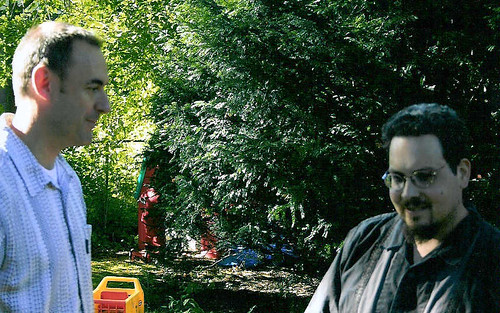|
|
🦋 The Pátio do Padeiro
On Monday, Saramago posted a charming piece about the neighborhood where he grew up:
I believe it was twelve years, the time I spent in the Penha de França, first in the Rua Padre Sena Freitas, then in the Rua Carlos Ribeiro. For a much longer time, until my mother died, the neighborhood was for me a persistent extension of all the other places through which I passed. I have memories of it which remain vibrant today. Back then the Vale Escuro lived up to its name, it was a place of adventure and discovery for kids, a remnant of nature which the first construction projects were already beginning to threaten, but where it was possible to savour the sour taste of of the cedars and the sweet tuberous roots of a plant whose name I never learned. And there was also the battlefield, the site of Homeric struggles... And there was the Pátio do Padeiro (which was not in Penha de França, but in Alto de Saõ Joaõ...), where "ordinary" people did not dare to enter and where, it was said, even the police made themselves scarce, turning a blind eye to the supposed or actual illicit behaviours of those who lived there. What's certain is, great distrust and fear were caused by the closeness of that small world which lived segregated from the rest of the neighborhood and whose words, gestures and postures clashed with the tranquil routine of the timorous people who passed outside. One day, from the nighttime to the morning, the Pátio do Padeiro disappeared, perhaps laid waste by the municipal hammer, or more likely by the construction companies'excavations, and in its place arose buildings without imagination, each one a copy of the others, which grew old within a few years' time. The Pátio do Padeiro, at least, had its originality, its own physiognomy, even if it was nasty and malevolent. If I could do it, if I were able to share the life of these people to find out, I would like to reconstruct the life of the Pátio do Padeiro. Alas they are lost. The people who lived there are dispersed, their descendants have improved their lives, have forgotten or do not wish to recall the hard existence of those who lived before them. In the memory of the Penha de França (or of the Alto de S. Joaõ) there is not any space left for the Pátio do Padeiro. There were people who were born and lived without luck. Of them there remains not even the stone of their door-jamb. They have died and passed away.
I don't find anything about this bit of Lisbon's history online -- the name means "The bakery's courtyard," perhaps there was a baking industry near there and the people who lived there were the labor force? If you follow my link above you can see a map of the neighborhood.
posted evening of Wednesday, August 5th, 2009
➳ More posts about Saramago's Notebook
➳ More posts about José Saramago
➳ More posts about Readings
| |
|
Drop me a line! or, sign my Guestbook.
•
Check out Ellen's writing at Patch.com.
| |





